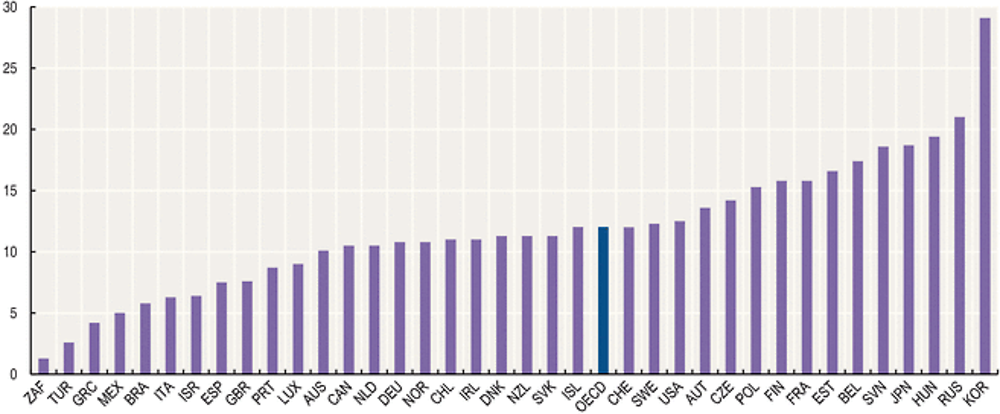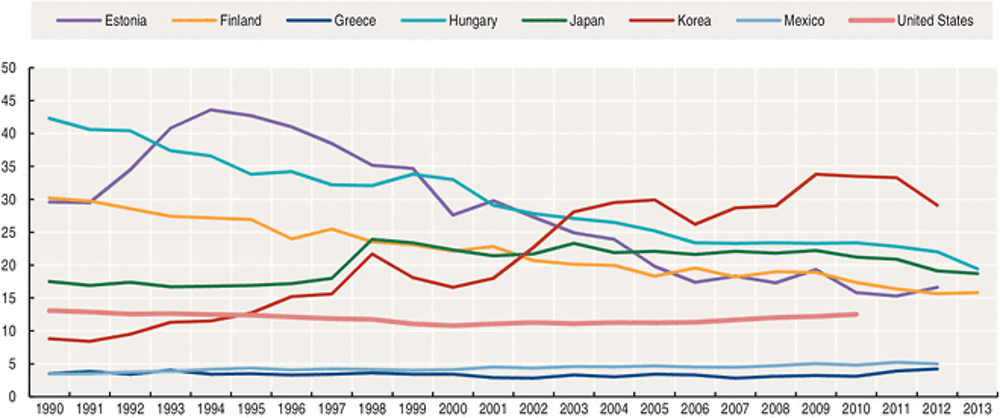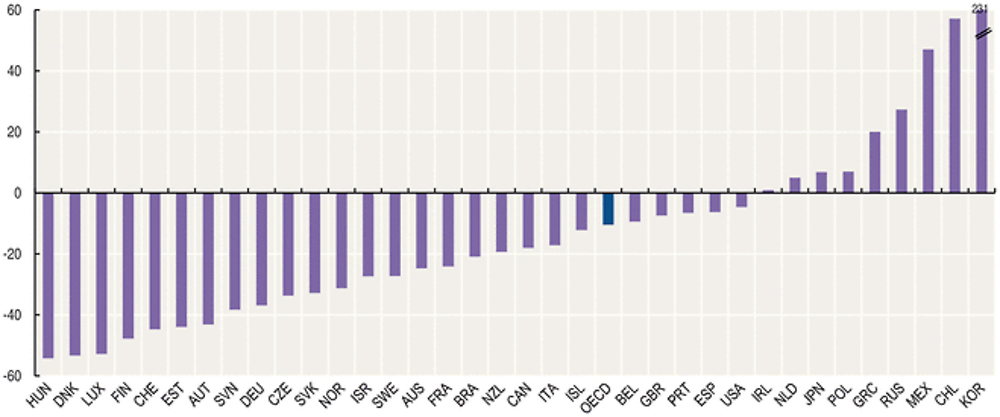Suicides
Suicide is a significant cause of death in many OECD countries, accounting for over 150 000 deaths in 2013. A complex set of reasons may explain why some people choose to attempt or commit suicide. A high proportion of people who have attempted or committed suicide are suffering from psychiatric disorders such as severe depression, bipolar disorder and schizophrenia. The social context in which an individual lives is also important. Low income, alcohol and drug abuse, unemployment and social isolation are all associated with higher rates of suicide.
Early detection of psycho-social problems in high-risk groups by families and health professionals is an important part of suicide prevention campaigns, together with the provision of effective support and treatment. Many countries are developing national strategies for prevention, focusing on at-risk groups.
Definition
The World Health Organization defines suicide as an act deliberately initiated and performed by a person in the full knowledge or expectation of its fatal outcome.
Mortality rates have been directly age-standardised to the 2010 OECD population to remove variations arising from differences in age structures across countries and over time. The source is the WHO Mortality Database. Deaths from suicide are classified to ICD-10 codes X60-X84.
Comparability
Comparability of data between countries is affected by a number of reporting criteria, including how a person’s intention of killing themselves is ascertained, who is responsible for completing the death certificate, whether a forensic investigation is carried out, and the provisions for confidentiality of the cause of death. The number of suicides in certain countries may be under-estimated because of the stigma that is associated with the act, or because of data issues associated with reporting criteria. Caution is required therefore in interpreting variations across countries.
Suicide rates in 2013 were lowest in Turkey, Greece, Mexico, Italy and Israel, at seven or fewer deaths per 100 000 population, although the number of suicides in certain countries may be under-reported because of the stigma associated with the act or data unreliability associated with reporting criteria. Suicide rates are also low in South Africa and Brazil. Korea had the highest suicide rate with nearly 30 deaths per 100 000 population, followed by Russia, Hungary, Japan and Slovenia with nearly 20 deaths per 100 000 population.
Mortality rates from suicide are three-to-four times greater for men than for women across OECD countries. In Poland and the Slovak Republic, men are seven times more likely to commit suicide than women. The gender gap is narrower for attempted suicides, reflecting the fact that women tend to use less fatal methods than men. Suicide is also related to age, with young people aged under 25 and elderly people especially at risk. While suicide rates among the latter have generally declined over the past two decades, less progress has been observed among younger people.
Since 1990, suicide rates have decreased by around 30% across OECD countries, with the rates being halved in countries such as Hungary, Denmark, Luxembourg and Finland. In Estonia, after an initial rise in the early 1990s, the rates have also fallen sharply. On the other hand, death rates from suicides have increased in Korea, Chile, Mexico, Russia, Greece, Poland, Japan and the Netherlands. In Japan, there was a sharp rise in the mid-to-late 1990s, coinciding with the Asian financial crisis, but rates have started to come down in recent years. In Korea, suicide rates rose steadily over the past two decades peaking around 2010, before starting to come down. Suicide is the number one cause of death among teenagers in Korea.
Sources
-
OECD (2015), OECD Health Statistics (Database).
Further information
Analytical publications
-
OECD (2015), Mental Health and Work, OECD Publishing.
-
OECD (2015), OECD Health Working Papers, OECD Publishing.
-
OECD (2014), Making Mental Health Count, OECD Publishing.
Statistical publications
-
OECD (2015), Health at a Glance, OECD Publishing.
-
OECD (2014), Health at a Glance: Asia/Pacific, OECD Publishing.
-
OECD (2014), Health at a Glance: Europe, OECD Publishing.
Websites
-
Mental Health, www.oecd.org/health/mental-health.htm.
-
OECD Health Statistics (supplementary material), www.oecd.org/els/health-systems/health-statistics.htm.



